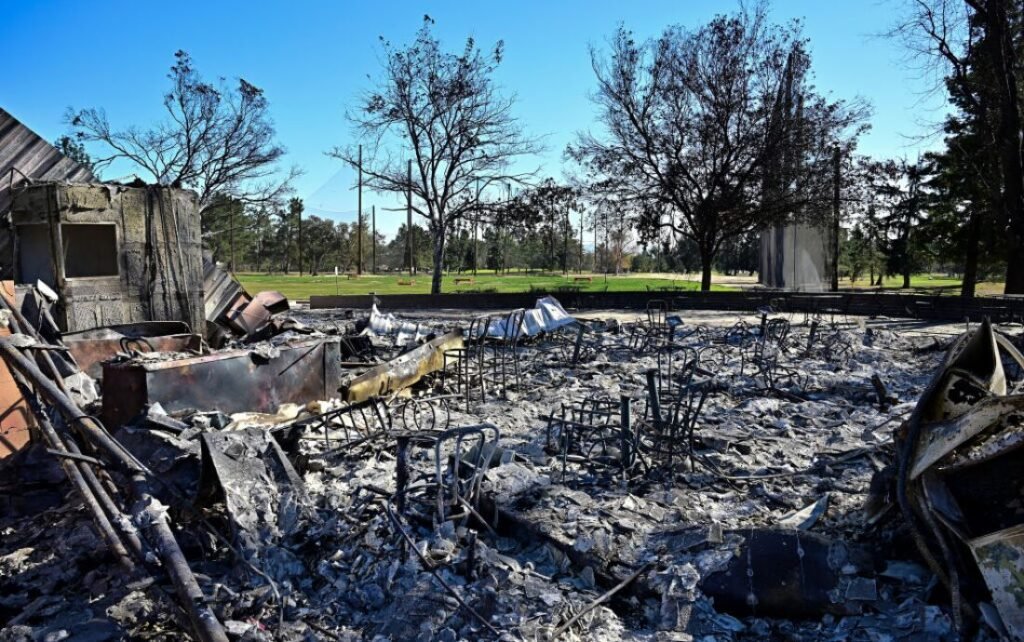New study unveils key reason behind devastating Los Angeles wildfires

Charred chairs remain amid the ash and rubble from buildings burnt at the Altadena Golf Course during the Eaton Fire, on January 23, 2025 in Altadena, California. California Governor Gavin Newsom today signed legislation directing $2.5 billion in relief to support response and recovery efforts for Los Angeles. (Photo by Frederic J. BROWN / AFP) (Photo by FREDERIC J. BROWN/AFP via Getty Images)
A new scientific study has confirmed that climate change played a major role in the extreme heat and dry conditions that fueled the devastating Los Angeles wildfires.
According to World Weather Attribution (WWA), global warming made these conditions 35% more likely.
The study highlights a troubling trend—LA’s wildfire season is getting longer, while the rains that typically extinguish blazes have decreased.
Lead author Dr. Clair Barnes of Imperial College London stated that droughts are extending into winter, increasing the risk of fires breaking out during strong Santa Ana winds, which can transform small ignitions into deadly infernos.
The Santa Ana winds, known for their gusty, dry air, played a crucial role in the fires that have killed 30 people and destroyed over 10,000 homes since early January.
WWA scientists used climate models and real-world data to analyze how global warming, driven by the burning of fossil fuels, has affected heatwaves, droughts, and wildfires. Their findings show that hot, dry conditions like those seen in LA are now expected every 17 years—35% more often than in a world without climate change.
Additionally, the fire season has lengthened by 23 days since the mid-19th century, meaning dry conditions and Santa Ana winds are increasingly overlapping, making large fires more likely.
While researchers caution that their models did not show a strong link between rising temperatures and declining rainfall, they emphasize that a warmer world is driving more extreme fire conditions—and as fossil fuel use continues, the risks will only grow.









